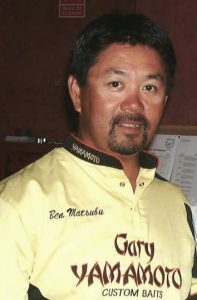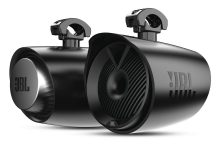Split-Shot Rigs Are Hard To Beat

Ben Matsubu once took sixth place in a WON Bass Tri-State Championship on Mead with a split-shot rig. He said he watched another guy fish a bank and catch nothing, then Ben went behind him with a split-shot rig and caught eleven fish off that same bank. A split-shot rig is hard to beat when fish are cold and sluggish, and won’t move far or take a big bait.
Set Themselves
Ben says he likes to use the Gamakatsu kahle hook and a small swivel on his rig. Pinching a split shot on your line can damage and weaken it, and the last thing you want, especially in a tournament, is for your line to break when you finally hook the big one. He casts the rig out and fishes it slowly, dragging the bait a little, then reeling up the slack. If it feels heavier the next time he drags it, he sweeps back and reels to set the hook. Those little kahle hooks practically set themselves, so you don’t have to be brutal with them.
Matsubu uses a variety of baits when he split-shots: small plastics such as 4-inch worms, grubs, craws, etc. His favorite colors, he says, are the more natural ones: white, bluegill, clear with glitter, smoke, and sometimes a little chartreuse for shad colors. For crawdad colors he uses dark greens and pumpkins.
In Winter

In winter, Ben searches channels and steeper drop-offs for bass. Often, he says, they will hang around the edge of a flat, especially one with a good steep drop-off. That way they can move onto the flat once the sun has warmed the water up a bit. He uses light weights so the lures fall slowly, keeping them in the strike zone as long as possible. When I was at Lake Pleasant with him one January, the fish were holding 35 feet deep in a channel, and Ben had to stay there for quite a while, slowly pulling a split-shot rig through them before he started catching them.
Matsubu also uses Carolina rigs in winter, and he has tried a lot of different baits on them. He’s been known to use soft jerkbaits, lizards, worms, and grubs on his Carolina rigs. Sometimes if the fish are there (he can see them on his graph) and won’t bite one lure, he can get them going by switching lures. He tries different colors, too. The important thing, Ben says, is not to give up. The fish will eventually eat. You just have to be patient and figure it out. Once they decide to wake up and go shallow, you can get them with spinnerbaits, crankbaits, or jerkbaits up on the flats. An especially killer method for these feeding fish is to swim a jig.
A shad-colored skirt and twin-tail is a good bet for a swimming jig. You can use any size jighead you want – just cast it out and fish it like a crankbait. Keep the jig going just fast enough to knock against the bottom every few feet. For some reason, swimming a jig will usually get you much bigger fish than a crankbait will. The fish really slam it hard when they hit, and you have to set the hook with a vengeance. Keep the rod positioned for a hookset all the time you are reeling.
A Structure Fisherman
“If I can find good structure fish I’d just as soon stick to that,” Ben says. “If you can find a school of three-pounders boiling, by all means go for that – there’s nothing wrong with getting 15 pounds in the boat in two hours.” But Ben classifies himself as more of a structure fisherman. As he says, “the fish are more dependable and you don’t have all the competition.”
Ben Matsubu now lives in Texas, but anyone who has followed bass fishing in Arizona for a while knows his name. The man is a stick.
Please scroll to the bottom of any article and leave us your outdoor experiences in the “Comments” section.
More Arizona Fishing Resources
Click here to see a list of AZ Lakes AZ Pros Stories on Western Outdoor Times.
Click here to see a list of AZ Lakes AZ Pros Stories on Arizona Boating And Watersports
Arizona Rivers And Streams Publishers Note
© 2005-2022 Arizona Boating & Watersports. All Rights Reserved.































